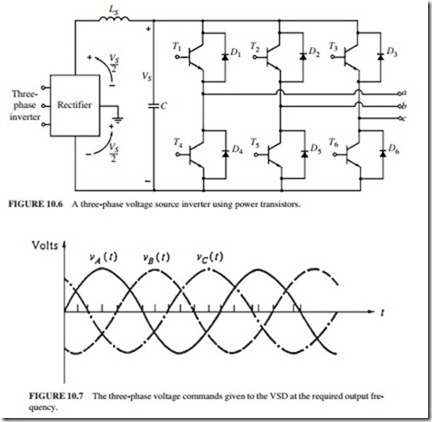OUTPUT IGBT INVERTER
Figure 10.6 illustrates a typical two-level PWM inverter circuit. It is similar to the SCR bridge, but it uses IGBTs for the switching devices. The energy storage capacitor is denoted by C. The motor connections are a, b, and c. The inverter operation is as follows:
Once the output frequency required to satisfy the speed regulator is given to the control system, it calculates the three-phase voltage commands (Fig. 10.7). A triangle voltage waveform (Fig. 10.8) is generated and synchronized with the desired IGBT switching frequency and phase. This is the PWM carrier waveform that sets the basic inverter switching frequency. The average width of the PWM waveforms generated approximates the sine wave reference. The inductances average and smooth the resulting waveform.
Figure 10.8 also shows the resulting PWM line-to-line output voltage compared to the original sine wave reference. When the transistors are on, the current charges the motor inductance. When they are off, the current freewheels through the corresponding diode. This causes the characteristic ripple shown in Fig. 10.9. The ripple causes motor heating in excess of that due to a sine wave current. Thus, motors must be thermally derated when used with two-level PWM inverters.
